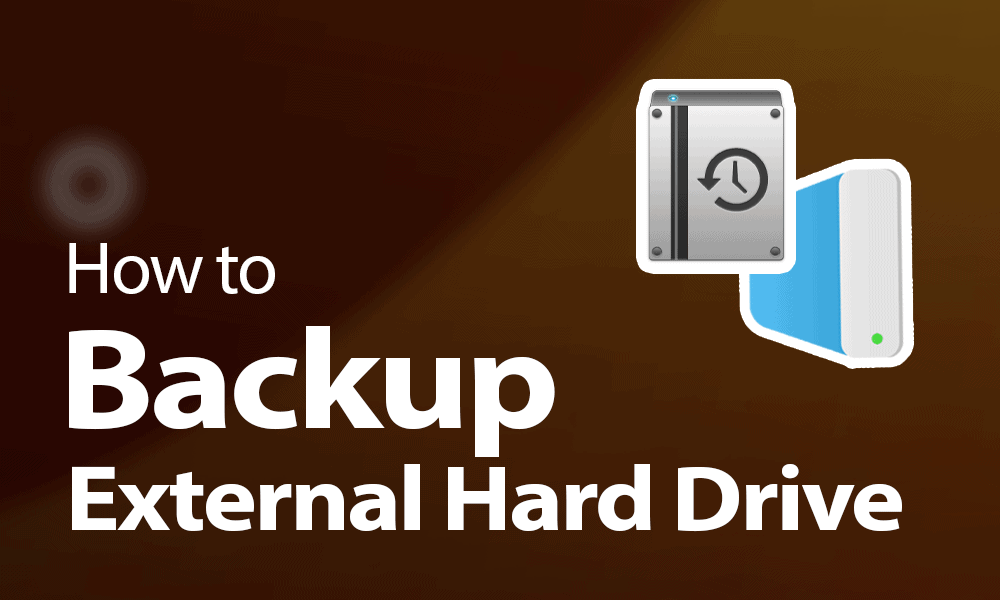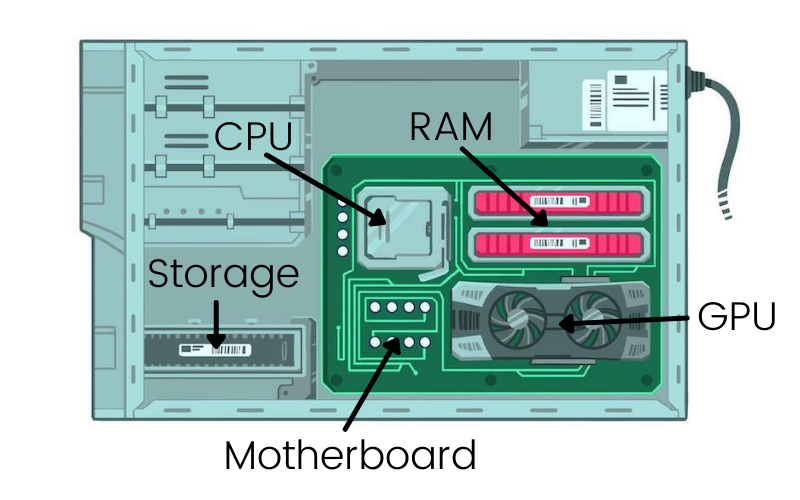Losing your precious photos, important documents, or critical work files due to a computer malfunction can be a truly devastating experience. I’ve “seen” the heartache it causes countless users. In April 2025, with our lives so deeply intertwined with our digital data, having a reliable backup strategy is more crucial than ever. Using an external hard drive for backups is a simple, effective, and affordable way to protect your valuable information on your Windows 10 or Windows 11 computer. This guide will walk you through the step-by-step process of how to back up your data to an external hard drive, ensuring your digital life is safe and sound.
Step 1: Preparation is Key
Before you begin the backup process, you’ll need an external hard drive with sufficient storage capacity and a reliable connection to your computer.
- Select an External Hard Drive: Choose an external hard drive with enough storage space to accommodate all the data you want to back up. Consider your current data size and anticipate future growth. For most users, a drive with 1TB or more is a good starting point.
- Connect the External Hard Drive: Plug the external hard drive into an available USB port on your Windows 10 or Windows 11 computer using the provided USB cable. Ensure the connection is secure.
- Allow Windows to Recognize the Drive: Windows should automatically detect your external hard drive. You might see a notification pop up indicating that a new drive has been connected. You can usually find the drive listed in File Explorer under “This PC.”
Step 2: Method 1: Using File History
File History is a built-in Windows 10 feature that automatically backs up files from your Documents, Music, Pictures, Videos, Desktop folders, and OneDrive offline files to your external drive on a regular schedule.
- Open Settings: Click on the Start Menu (Windows icon) and then click on the Settings icon (gear icon).
- Go to Update & Security: Click on “Update & Security.”
- Click on Backup: In the left-hand menu, click on “Backup.”
- Add a Drive: Under the “Back up using File History” section, if you haven’t already set up a backup drive, you’ll see a message saying “Backup using File History isn’t set up.” Click the “Add a drive” button.
- Select Your External Hard Drive: A list of available drives will appear. Select your connected external hard drive from the list.
- Automatic Backups Will Start (Usually): Once you select the drive, File History will typically turn on automatically and start backing up your files periodically.
- Configure Backup Settings (Optional): To customize what gets backed up and how often, click on “More options” under “Back up using File History.” Here you can:
- Adjust Backup Frequency: Change how often File History saves copies of your files (e.g., every hour, every 6 hours, daily).
- Choose Folders to Back Up: Add or remove folders that you want to include or exclude from the backup.
- Set How Long to Keep Backed-Up Versions: Specify how long File History should keep saved versions of your files (e.g., forever, for 1 year, until space is needed).
File History is a convenient way to have ongoing, automatic backups of your most important personal files.
Step 3: Method 1: Using Backup and Restore
While Windows 11 encourages the use of OneDrive for backup, the functionality similar to File History in Windows 10 is still present.
- Open Settings: Press the Windows key + I to open the Settings app.
- Go to System: Click on “System.”
- Click on Storage: In the left-hand menu, click on “Storage.”
- Click on Advanced storage settings: Scroll down and click on “Advanced storage settings.”
- Click on Backup options: Click on “Backup options.”
- Add a drive: Under “Files and folders,” click “Add a drive” and select your connected external hard drive.
- Configure Backup Settings: After selecting the drive, you can click on “Backup options” again to customize:
- Backup frequency: Set how often backups occur.
- Keep backups for: Specify how long to retain backups.
- Folders to back up: Add or remove folders you want to include in the backup.
This method in Windows 11 provides similar functionality to File History in Windows 10 for ongoing file backups.
Step 4: Method 2: Creating a System Image Backup (Windows 10 & 11 – For a Full System Recovery Point)
A system image backup creates an exact copy of your entire system, which can be used to restore your computer to a previous state in case of a major failure.
- Connect Your External Hard Drive: Ensure your external hard drive is connected to your computer.
- Search for “Backup and Restore (Windows 7)” in the Start Menu (this tool is still present in both Windows 10 and 11) and open it.
- Click “Create a system image”: On the left-hand side of the Backup and Restore window, click on “Create a system image.”
- Choose Where to Save Your Backup: Select your connected external hard drive as the location to save the system image. Click “Next.”
- Confirm What to Back Up: By default, your system partitions will be selected. You can choose to include additional drives if you wish. Click “Next.”
- Review Your Settings: Double-check the settings to ensure they are correct. Click “Start backup.”
- Wait for the Backup to Complete: The backup process might take some time depending on the amount of data on your system. Once it’s finished, you’ll be prompted to create a system repair disc (optional but recommended). Follow the on-screen instructions.
- Store Your Backup Safely: Keep your external drive containing the system image in a safe place.
A system image backup is a more comprehensive backup solution that allows you to restore your entire computer, not just individual files.
Step 5: Performing a Manual Copy
For smaller amounts of data or as an occasional backup, you can manually copy files and folders to your external hard drive using File Explorer (Windows 10 & 11).
- Open File Explorer: Press the Windows key + E to open File Explorer.
- Locate the Files and Folders You Want to Back Up: Navigate to the folders containing the data you want to copy (e.g., Documents, Pictures, Videos).
- Select the Files and Folders: Select the items you want to back up. You can select multiple items by holding down the Ctrl key while clicking on them, or select an entire folder by clicking on it.
- Copy the Selected Items: Right-click on the selected files and folders and choose “Copy.”
- Navigate to Your External Hard Drive: In File Explorer, find your external hard drive listed under “This PC” or “Devices and drives.” Double-click to open it.
- Paste the Copied Items: Right-click in an empty area of your external hard drive and choose “Paste.” The files and folders will be copied to your external drive.
While simple, manual copying is less efficient for regular backups as it doesn’t automatically track changes or create versions of your files.
Step 6: Scheduling Regular Backups
To ensure your data is always protected, it’s crucial to schedule regular backups to your external hard drive using one of the automated methods (File History or Windows 11 Backup). Set a schedule that works for you, whether it’s daily, weekly, or monthly.
My Personal Experience with Backing Up Data
Over the years, I’ve learned the hard way that data loss can happen to anyone. Regularly backing up my important files to an external hard drive has saved me from potential disasters on multiple occasions. I personally prefer using File History in Windows 10 for its automatic and versioning capabilities, and the similar feature in Windows 11. Creating a system image backup periodically also provides an extra layer of security for complete system recovery. Make backing up your data a regular habit – you’ll thank yourself later!




